What is the Best Lens to Buy?
Even with the growing popularity of lighter, mirror-less cameras, lens selection is an important decision for every photographer. You can only carry so much glass before you start resenting your camera bag! As a result, variations on the question “Which is the best lens to buy?” crop up regularly in my workshops.
The article was published as a cover feature by the awesome team at Good Light Magazine.
The Best Lens to Buy, the Short Answer
The best lens to buy is a zoom lens with an expansive focal length range. Something like the Tamron 28mm – 300mm will give you the flexibility to shoot portraits, landscapes and street photography.
The Best Lens to Buy, the Long Answer
The above answer is, of course, overly simplistic. If I owned the above zoom lens, I’d rarely use it. Sure, its focal length range would enable me to quickly switch between close-up portraiture and wide-angle landscapes – but it wouldn’t do a particularly satisfying job with any of those situations.
It’s a beginner lens: a lens for photographers that are still deciding what to specialize in. There is nothing wrong with that but, as you become more proficient, you’ll realize that photography is always about compromise. By choosing a zoom lens with such a wide focal length range, you’re compromising on many other features including aperture and focus speed.
So, while I totally understand the natural tendency to look for the ‘best lens to buy’, it’s a flawed goal.
Instead, let’s reframe the question to something more practical: “How do I learn to select the best lens for any situation?”
A quick caveat before I plow into this contentious topic: lens choice should not purely be a technical choice, but also a creative one. In this article, I’ll focus mostly on the technical reasons I consider when pairing a lens to a situation. Once you understand these guidelines, I encourage you to break them in pursuit of your own creative goals.
OK, with that out of the way, let’s start by picking a ‘situation’. I’m a cultural photographer, so I’m going to focus on choosing the right lens for a typical portrait. By typical, I mean a portrait where the model takes up the majority of the frame. Something like this:
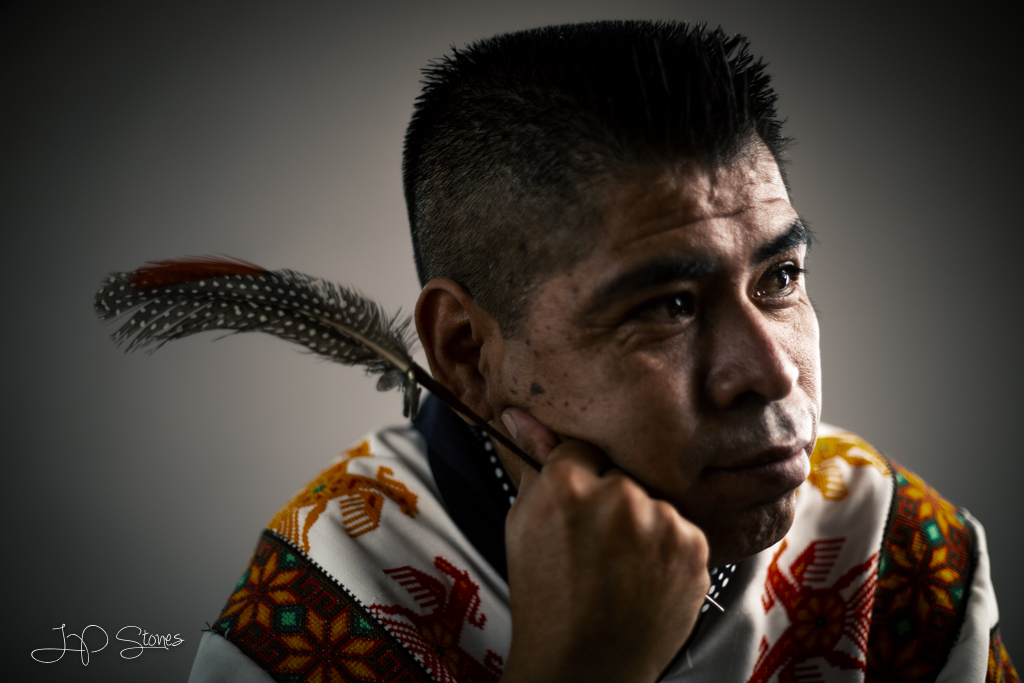
Focal Length
This idea of the model ‘filling the frame’ is actually a great place to start our lens selection process. That’s because the space objects occupy in a frame, called the angle of view, is determined by the focal length of your lens. It’s a concept which can be best explained visually with the diagram below:
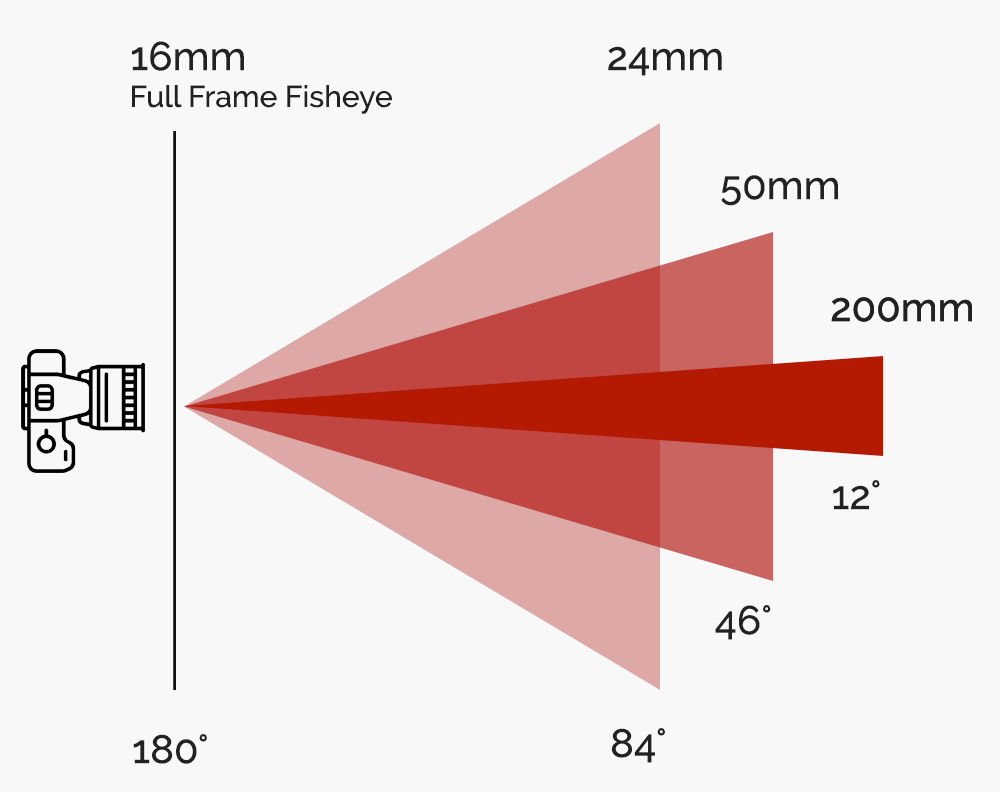
As you can see from the diagram, the focal length is correlated to the angle of view. The 16mm lens has a sweeping 180° angle of view. These wide-angle lenses can be great for landscape photography, where you often want to take in the entirety of a scene. A portrait is different though, as we want our model to fill the frame – not just be a part of it. In other words, we want a narrower angle of view. Choosing a 50mm lens provides us with a narrower 46° angle of view.
Of course, if you have a wide angle lens, and want your subject to fill up more of the frame, you could just move right up to your subject. But do this and you’ll notice a phenomenon called perspective distortion.
Perspective Distortion
Let’s start with some theory:
- Perspective distortion is the warping of a subject, in a way that differs from what that subject would look like with a normal focal length.
- A normal focal length is defined, quite logically really, as what you see with your eyes.
- The ‘angle of view’ of your eyes is equivalent to a focal length of 44mm.
- As a result, the 50mm lens is commonly used as a reference point for ‘normal’ focal length.
What this means, is that distortion will start to occur in your photos as your lens moves away, in either direction, from that ‘normal’ focal range. To illustrate this effect, I took 3 photos of the same subject. The first with a 16mm lens, the second with a 50mm lens and the last one with a 70mm lens. I was going to try it with a 200mm lens but I would have had to knock down a wall in my studio!
Maybe you’re having a ‘eureka’ moment now, as you suddenly understand why so many portrait photographers swear by their 50mm lenses. I certainly did when I first found this out!
 I placed a grid over all three photos that will help you visualize the distortion that occurs at both ends of focal length spectrum.
I placed a grid over all three photos that will help you visualize the distortion that occurs at both ends of focal length spectrum.
- Barrel distortion happens as the focal length decreases (i.e. with wide angle lenses). As you can see from the grid, the grid lines are being pulled outwards. On a portrait, this will appear to pronounce the size of the nose and eyes.
- Pin-cushion distortion happens as the focal length increases (i.e. with telephoto lenses). It has the opposite effect of pulling the grid lines into the center. On a portrait, this will appear to flatten the face.
I created the diagram below which ties together everything we’ve just discussed: focal length, angle of view and distortion.
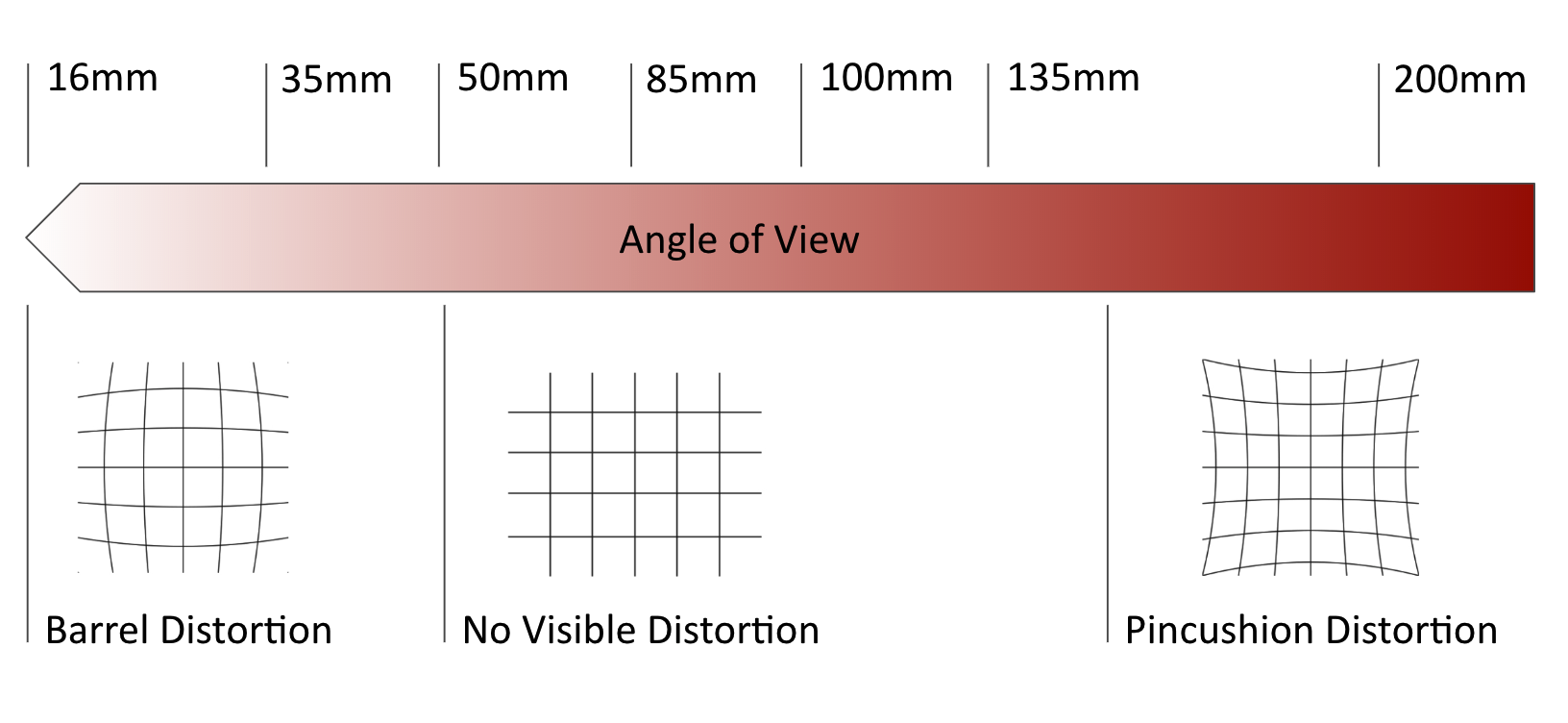 Disclaimer: While writing this, I realized I had no idea what a pin-cushion was. After googling the term, I now know what a pin-cushion is but have no idea why it is called pin-cushion distortion.
Disclaimer: While writing this, I realized I had no idea what a pin-cushion was. After googling the term, I now know what a pin-cushion is but have no idea why it is called pin-cushion distortion.
Besides distortion, there are some practical issues with choosing lenses on the far end of the focal length spectrum. To take a wide angle portrait you will need to get right up into the face of your subject, which can be quite intimidating for your model. With a telephoto lens, the opposite is true, you will need to step several meters back to correctly frame the photo. I take a lot of photos in the jungle and trees make this awkward most of the time!
What have we learned so far:
- Searching for the best lens to buy is a flawed goal.
- The focal length of a lens affects the angle of view.
- Depending on where a lens sits on the focal length spectrum, it will either elongate perspective or compress it.
Just by understanding focal length, we’ve can narrow down our lens choice to the middle of the focal length spectrum. There is no exact answer here but let’s say 35mm to 85mm.
Aperture
Let’s continue narrowing down our lens choices. While I’ve explained why you should be taking portraits with lenses between 35mm and 85mm, I haven’t explained why I don’t recommend using a zoom lens with this range.
The act of ‘zooming’ – just so we are clear – is simply moving up or down a focal length range. So a 35mm to 85mm zoom can take photos at any point in that range. At 85mm, it would be set to it’s narrowest angle of view, and therefore at it’s most zoomed in.
Now the reason I don’t suggest you go a buy a zoom lens is simple: aperture. Specifically, how the complex engineering required to make a zoom lens limits its maximum aperture. And that’s a problem because aperture is everything in portrait photography.
Let’s get the theory out of the way first:
- Aperture is the opening in the lens that lets light through.
- Aperture is measured in f-stops. The lower the f-stop the wider the opening. So a wide aperture (for example f1.8) will let more light through than a narrow aperture (say f11).
- Aperture also affects an optical phenomenon known as depth of field, which is the distance where objects appear sharp in an image.
And depth of field is why portrait photographers love wide apertures – it can be used to separate a subject from its surroundings, or from other subjects.
In this photo, I used a narrow depth of field to focus the reader’s attention on the female model.
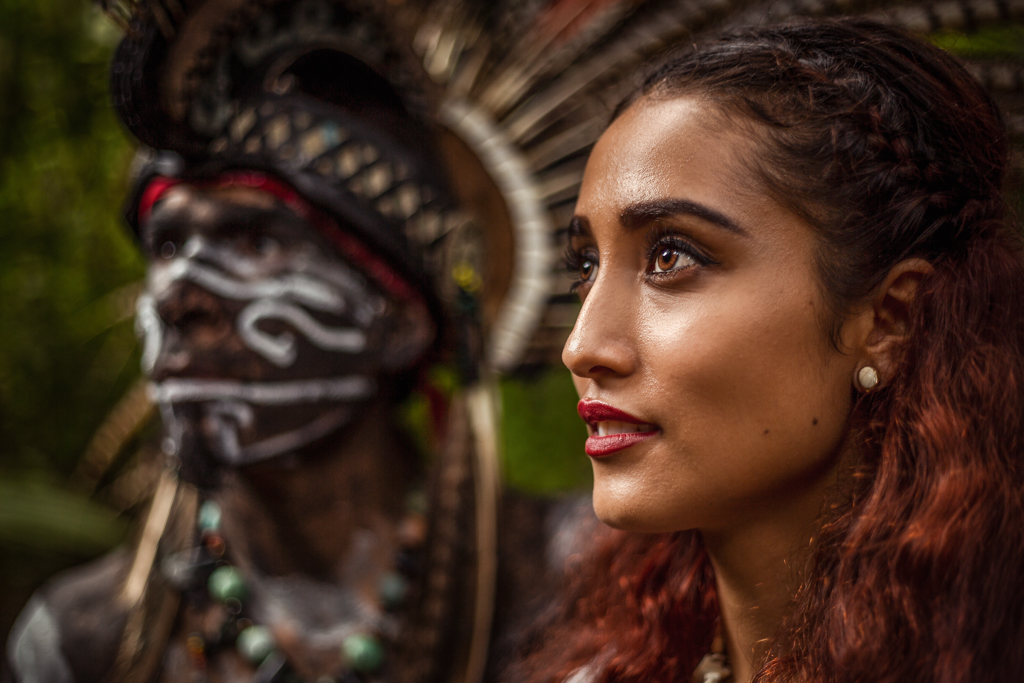
In this second photo, depth of field is used to bring attention to the face rather than the sahumador (which actually occupies more photo real-estate).
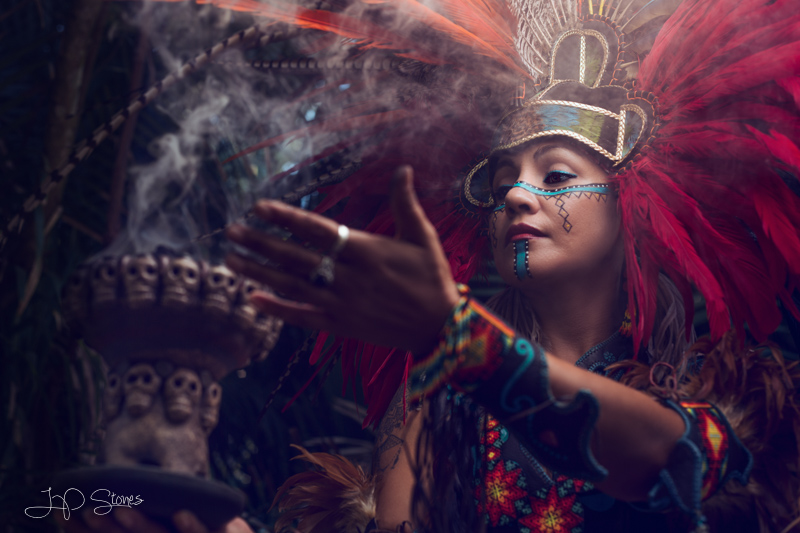
Zoom lenses (apart from the really expensive ones) rarely open to much more than f4. Whereas a cheap prime lens (aka a lens with a fixed focal length) can open to f1.8 and more expensive ones to f1.2. That difference might seem trivial but it will make a huge difference to your photos. f1.8 will separate a subject from its background. f4 won’t.
Now I’m not going to pretend I understand the in’s and out’s of lens construction. What matters to me is that zoom lenses rarely give me the subject separation I want (at a price point I can afford).
Zoom with your feet
I think it’s normally at this point in the conversation that someone always says “I don’t need a zoom lens because I can zoom with my feet”. Well, no you can’t actually.
As we have just learned: zoom = change in angle of view. And the angle of view does not change when you move forward or back – because the lens doesn’t change. It’s a bit confusing because moving closer to a subject does make the subject bigger, just like zooming, but that’s where the similarities end. By walking towards a subject that subject will indeed become bigger in your frame, but the wider angle of view will include more of the surroundings that a higher focal length. You can see this effect in the earlier image comparing the 3 different focal lengths. Compare the 16mm photo (where I walked right up to the models face) with the 70mm. The difference you’re seeing is the angle of view. You can recompose with your feet but it’s not the same as zooming!
Sharpness
I hesitated about including this section because it doesn’t factor it into my decision making. But, for those of you that have read up on the zoom vs prime debate, you’ll likely come across the “Zoom lenses are less sharp than prime lenses.” argument. So let me just weigh in briefly on this issue.
Zoom lenses have more pieces of glass, and so the light is manipulated more. 10 years ago this meant the optics were negatively affected which resulted in a softer photo (and a visible increase in lens aberration). But improvements in lens construction technology have mostly rendered this a non-issue. Well, assuming you have a high budget!
What have we just learned?
- Prime lenses typically have wider apertures than zoom lenses.
- This makes them a more natural choice for portraiture.
- You can’t “zoom with your feet” you can only zoom by changing focal lengths.
So where does that leave us? I would say with three prime lenses: a 35mm, a 50mm, and an 85mm.
That’s as far as I can take you in this article. To further narrow down lens choice you would need to have an idea about the ‘specific’ photos you want to take. Something I cover in depth in the Planning a Photoshoot series of articles.
Budget Constraints
I know that I’m suggesting you buy multiple lenses here, and that’s an expensive suggestion. But for the most part, photographers will end up concentrating on one or two categories of photography. What we covered today was that process in a nutshell. If we had opted for Nature photography, rather than portraiture, we would have ended up with a different set of lens options. But it would have been constrained by the process aka a few lenses would cover it.
I buy most of my lenses second hand for one simple reason: so I can buy more lenses! Once you inspect and test a lens, there is very little risk in buying it.
Nor am a brand addict with my lenses. I really like Canon lenses, but they are expensive. Other manufacturers can be just as good. Once you decide on the aperture and focal length you want. Look for well-reviewed lenses. You do not need to buy a big brand lens.
What’s in my bag?
Now you understand the characteristics of lenses and how they affect your photos you can decide on the right lens for any situation. That’s a much better position to be in than just – wrongly – assuming that an expansive zoom range will solve all your photography needs!
I thought I would finish this article with a look at the lenses I typically carry with me on a large shoot. I do think through the photos I plan to take, as mentioned above, and narrow this down when I can.
- 50mm f1.8
- 85mm f1.4
- 70mm – 200mm f2.8
- 16mm – 24mm f2.8
So there you have it: a long-winded answer to the question “What is the best lens to buy?” that doesn’t even answer the question. What this article hopefully did do though, is give you the tools to choose the ideal lens for any future situation you find yourself in. Good luck!


No Comments